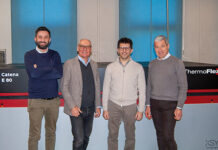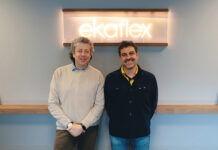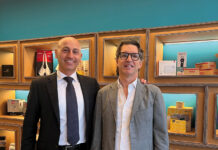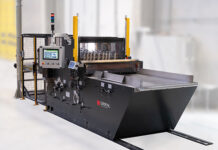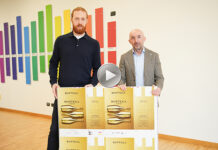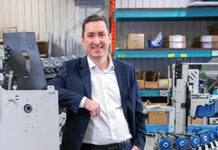
Two mandates to the presidency of Italian Packaging Institute, four years during which packaging has gone from demonization to being useful and indispensable during the pandemic. In this informal chat with Anna Paola Cavanna, the first female president, we retrace her path at the helm of Italian Packaging Institute, a path full of successes that have helped to give again the right value to this sector
In May, a month that will be full of events for the packaging sector, and which will open with Milan fair Print4All simultaneously with Ipack-Ima and Plast, which will continue mid-month with Giflex congress in Rome, there will be also the renewal of titles within Italian Packaging Institute, since the double mandate of Anna Paola Cavanna as president is coming to an end. What better opportunity, therefore, for an informal chat for an assessment of this associative path, which among various difficulties, has significantly affected the present and future strategies of the Italian Packaging Institute, which represents all the categories of materials with which packaging is produced.
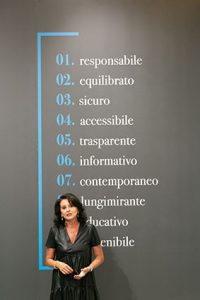 Personally, I can only thank my work as trade press journalist, that giving me the opportunity to participate in the numerous events proposed by the associations, first made me meet Anna Paola and establish a direct line with her, which especially in the middle of pandemic allowed us to collect several interviews and relaunch them in our magazine and portal, giving voice to a sector that has proved to be vital, present and increasingly attentive to aspects related to sustainability and circular economy, because one thing must be clear, the first to ask for precise rules on the management of end-of-life packaging are the key players in this extraordinary and vital sector, from producers of materials and technologies to printers, converters and packaging producers.
Personally, I can only thank my work as trade press journalist, that giving me the opportunity to participate in the numerous events proposed by the associations, first made me meet Anna Paola and establish a direct line with her, which especially in the middle of pandemic allowed us to collect several interviews and relaunch them in our magazine and portal, giving voice to a sector that has proved to be vital, present and increasingly attentive to aspects related to sustainability and circular economy, because one thing must be clear, the first to ask for precise rules on the management of end-of-life packaging are the key players in this extraordinary and vital sector, from producers of materials and technologies to printers, converters and packaging producers.
Face to face with Anna Paola Cavanna, president of Italian Packaging Institute
Let’s start from the bottom: is there something that you wanted to achieve and that you have not been able to carry out?
 “I wanted to start a training project for young people, it was all planned, but the pandemic hindered us, seeing and considering that we wanted to visit schools to introduce ourselves, make our sector known, give value to the contribution of packaging in today’s society, and above all to highlight the new professional skills linked to our world, thus also giving professional input to young students. However, I am confident that the new president will be able to go forward, exactly as I did at the beginning of my mandate, resuming the projects already started previously. The sense of an association is also to enhance projects that are already in embryo”.
“I wanted to start a training project for young people, it was all planned, but the pandemic hindered us, seeing and considering that we wanted to visit schools to introduce ourselves, make our sector known, give value to the contribution of packaging in today’s society, and above all to highlight the new professional skills linked to our world, thus also giving professional input to young students. However, I am confident that the new president will be able to go forward, exactly as I did at the beginning of my mandate, resuming the projects already started previously. The sense of an association is also to enhance projects that are already in embryo”.
Pre and post Covid: how is the packaging sector changing, especially as regards consumer perception?
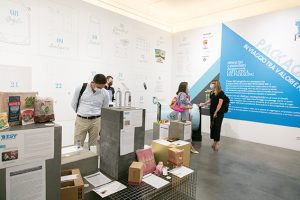 “We have moved from a sector targeted by environmental movements and figures such as Greta Thunberg to the re-evaluation of packaging during the pandemic when consumers have actually been able to really understand its fundamental role played above all in the food and pharmaceutical sectors. Today, the primary aspect to take into consideration when it comes to packaging is its function of protecting and storing food, in order to avoid food waste, which is the most unsustainable matter.
“We have moved from a sector targeted by environmental movements and figures such as Greta Thunberg to the re-evaluation of packaging during the pandemic when consumers have actually been able to really understand its fundamental role played above all in the food and pharmaceutical sectors. Today, the primary aspect to take into consideration when it comes to packaging is its function of protecting and storing food, in order to avoid food waste, which is the most unsustainable matter.
Now that we are finally starting to see a gradual return to normality, I notice the desire for deep interventions and change on the packaging. The issue must be faced with a certain basic honesty: it is undisputed that some types of packaging are outdated, that overpackaging must be avoided, and solutions that are increasingly sustainable and recyclable must be proposed. I see a profuse and rampant commitment of the industrial world to propose solutions that meet these trappings, even if it is not easy, especially at a time like this where the shortage of raw materials and the increase in energy costs have once again mixed the cards on the table. When it comes to sustainability, we must always think with a view to balance, because all aspects must be taken into consideration, from the environmental to the social, not neglecting the economic one”.
In the packaging sector, statements of producers of the various materials are many and varied and all tend to defend their solution: from your privileged and neutral observatory, what do you want to say to the various sectors? Is there a material and therefore an upstream industrial process that is truly the most sustainable and responsive to the dictates of circular economy?
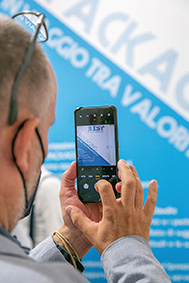 “On May 4th we will present at Ipack-Ima, in Milan, an algorithm that will be the basis of an innovative tool developed by the Sustainability Commission of Ethic Chart Packaging Foundation. The algorithm represents a rating that allows to attribute a numerical value to the positioning of the company with respect to the issue of sustainability, evaluating both the awareness of the problem by the organization, and the concrete activities implemented for the pursuit of objective. The algorithm also allows to highlight the improvement points on which the company must work, in compliance with the regulations in force in the sector in which it operates.
“On May 4th we will present at Ipack-Ima, in Milan, an algorithm that will be the basis of an innovative tool developed by the Sustainability Commission of Ethic Chart Packaging Foundation. The algorithm represents a rating that allows to attribute a numerical value to the positioning of the company with respect to the issue of sustainability, evaluating both the awareness of the problem by the organization, and the concrete activities implemented for the pursuit of objective. The algorithm also allows to highlight the improvement points on which the company must work, in compliance with the regulations in force in the sector in which it operates.
This is a significant step in translating theory into practical action. We know very well that there is no ideal packaging solution, but there are better materials and packaging for that particular application. In recent years we have witnessed a continuous proliferation in the points of sale of loose foods and here too it was soon clear that it was not the correct solution to follow, dictated more by a trend of the moment to carry on an idea, which has little to do with safety, hygiene, transport, shelf life, all issues on which the packaging industry has been committed for years in order to provide precise and reassuring answers to consumers.
Today the message to be passed on to consumers, and this is the area in which our industry, also helped by the legislator, still has to make efforts, is to correctly inform about the disposal of these materials at the end of their life.
The environmental labeling project that we have carried out together with Conai has precisely the task of educating people on the correct management of materials. On this aspect, there is also a lot of work to be done with young people and in schools. To conclude, I would like to say that every association should avoid self-referentiality, banning unnecessary parochialism, and work on its supply chains and stimulate companies to develop reusable and where not possible, recyclable solutions”.
Ethic Chart Packaging Foundation is undoubtedly your greatest success. How are the accessions proceeding and which projects are open on this front?
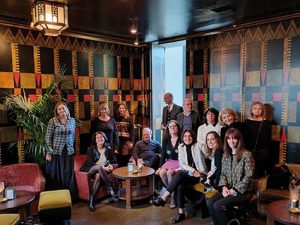
“This is a project born in 2020 that saw me very involved, so much so that my company was also the first to sign the agreement to become Ambassador of the Ethic Chart Packaging Foundation.
Today we have reached over 20 Ambassadors representing the supply chain and requests for membership continue to arrive, a sign that there is a very important and positive path of maturation and involvement in our industry. This figure, together with the over 400 members of Italian Packaging Institute, (there were about 270 associated companies at the beginning of Cavanna Presidency – editor’s note) testifies the desire of companies to actively participate in new projects that raise awareness within our sector.
It was not taken for granted in a short time to be able to achieve these results, also considering the period, and I am therefore happy to leave the new president a well-established path.
I am also happy that the Best Packaging Competition has succeeded in realizing the ideas of the Packaging Ethic Chart, giving a valuable contribution to let become real something that was ideal. Having introduced a new vision and language has paid off”.
On a personal level, what does this experience leave you?
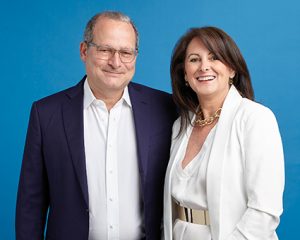
“I confess my regret now that I reached the end of this second term. I entered this new experience on tiptoe, the first woman to be elected to the presidency of the Italian Packaging Institute, with some fear but also with the awareness of having reached this prestigious position in a moment of personal and professional maturity that allowed me to get involved to carry out my ideas and projects. In these years of associative commitment I have built a network of professional and not-professional relationships, very profitable from all points of view: I will certainly continue to keep these contacts alive in the future. I dedicated a lot of passion and a lot of time to this experience, and I noticed a general appreciation during the various seminars, conferences, assemblies in which I participated directly. I understood that the associates needed a president who was also physically present.
Furthermore, the new organizational structure, led by Francesco Legrenzi, has contributed to give a new impetus to associative life. At the same time, a group of directors was created, representing important production companies and brand owners, very cohesive and where everyone has always given much more than the contribution required to carry out this role. I will continue to give my contribution to associative life, there is a project already outlined that is very close to my heart: the publication of a book on packaging because I believe it necessary to leave a document that tells the story of this sector, which is also an important economic sector for our country that deserves to be told”.






